How many Daggers does Gerald Ford need?
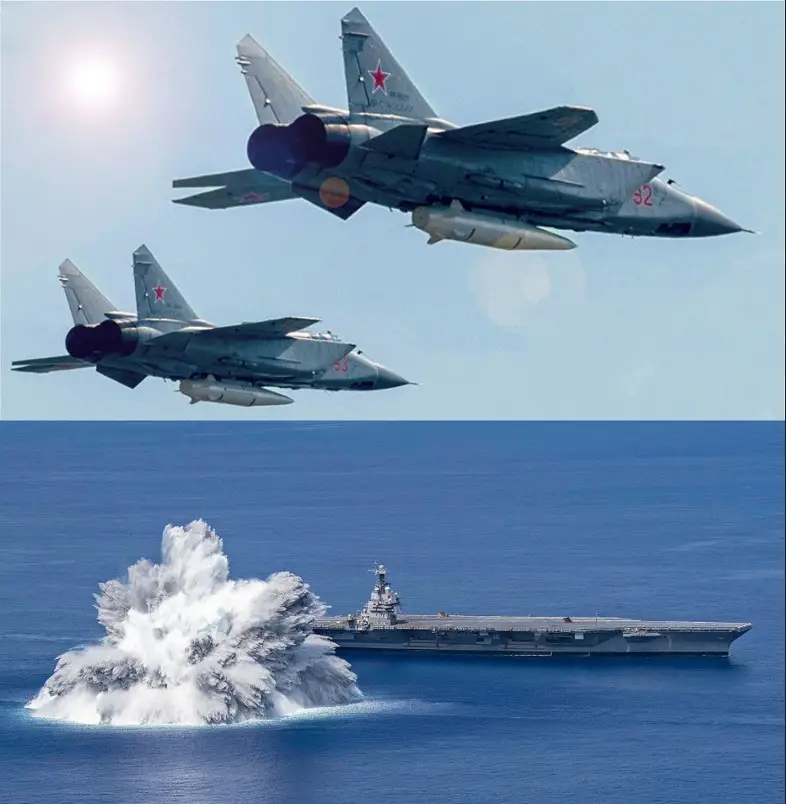
On one very patriotic resource (perhaps even more patriotic than ours), I came across a very heated discussion of a rather strange topic. The people were beating their chests, breaking their keyboards and psyches, juggling expert opinions (and the armchair experts there are even scarier than ours for sure) in attempts to agree on how many MiG-31K regiments would be needed in order to break through the defenses and drown to hell the American tub like "Gerald Ford" the next time he pops into the Mediterranean.
So, the task presented itself like this: an American Ford-class aircraft carrier, naturally with a warrant, since they don’t sail alone, in the Mediterranean Sea. It is clear that in its eastern part, the western part is not at all interesting to us. And this Ford needs to be stuck with a number of Daggers. Let's put it this way: the maximum sufficient to deprive this Ford of its ability to carry out its combat missions.
That carnival that revolved around the topic, by the way, ended in the expectedly stupidest nothing. Screams began: “And we have Pasidon, and we have edren-baton, we’ll beat everyone up anyway.” But some intelligent organisms were present there and were able to make the Brownian motion of the sofas somewhat meaningful.
Fine. "Ford" in the eastern part of the Mediterranean Sea, in the Latakia region. Could this be the case? Yes.

MiG-31K with something so characteristic under its belly at an altitude of 17-18 km above the Black Sea? Easily. More precisely, they are already flying. Looks like they're just patrolling.
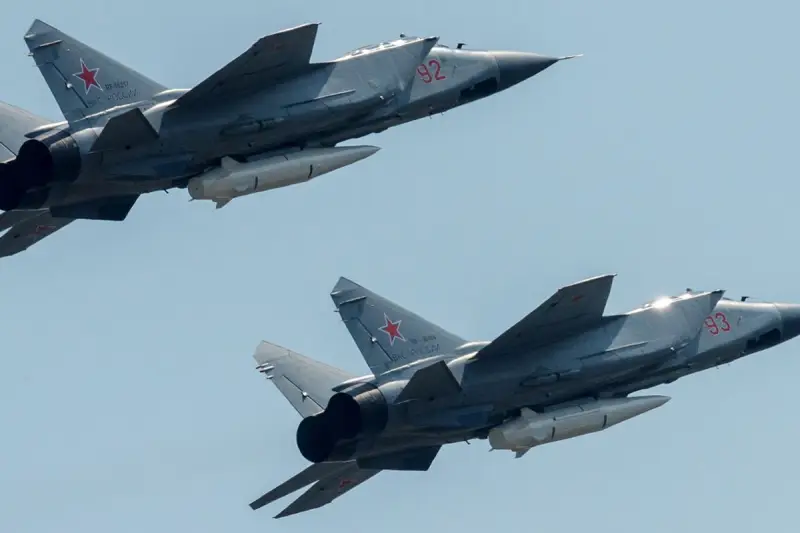
“Dagger”, which needs to fly from a point over the Black Sea to the Mediterranean? No problem at all, there will still be fuel left. There are 1000-1200 km in a straight line.
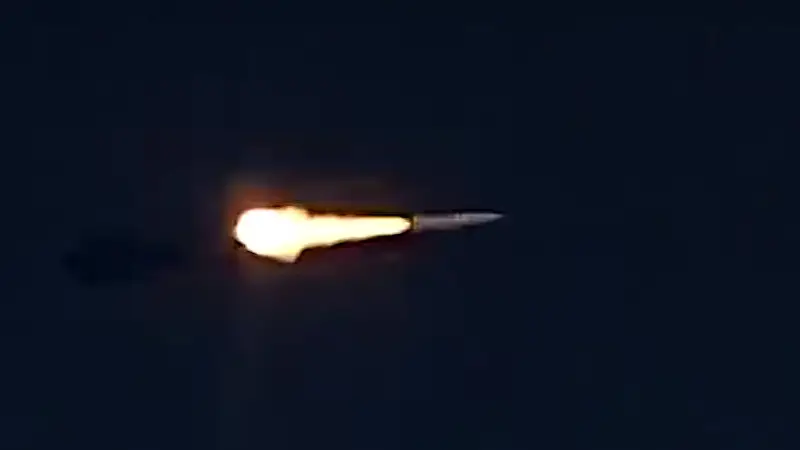
So what's the problem? Well, besides, what will the Turks freak out when such gifts fly through their airspace?
Accuracy
The Dagger has accuracy. Certain. Of course, we won’t believe in the beautiful fairy tale that the Kinzhal’s CEP is 1 meter, but we will take the Iskander, which is no different, but has a CEP of 30-70 meters.
Both of these ballistic missiles are guided using INS, an inertial navigation system. The system has many pros and cons. The main disadvantage is that the ANN is a “thing in itself”. The system itself is simple: accelerometers, also known as linear acceleration sensors and angular velocity measurement sensors (these can be either gyroscopes or pairs of accelerometers that measure centripetal acceleration). And the starting point on the map in the brain of the on-board computer, from which the dance begins.
These completely simple instruments allow you to determine the main thing: heading, pitch, roll. And nothing more is needed. If you need the so-called angular deviation of coordinates, that is, altitude, longitude and latitude, the onboard computer will calculate them without any problems.
In general, everything is simple: accelerometers measure, and the computer counts like hell. After all, it is precisely according to the readings of the accelerometers that she must calculate the point in space at which “it’s time to bang.” That’s why the clock is ticking in the computer’s head, and she, the hard worker, is counting. Accelerations, deviations, errors. In general, ballistics is mathematics in full, and how many errors need to be taken into account...
This is where the CEP (circular probable deviation) of 30-70 meters comes from. On the route up to 500 km. Everything is logical.
And here, as expected, “Dagger” will be more accurate than “Iskander”. Again, mathematically logical, there is no need to calculate the first half of the error, they didn’t fly themselves, the MiG-31K tried.
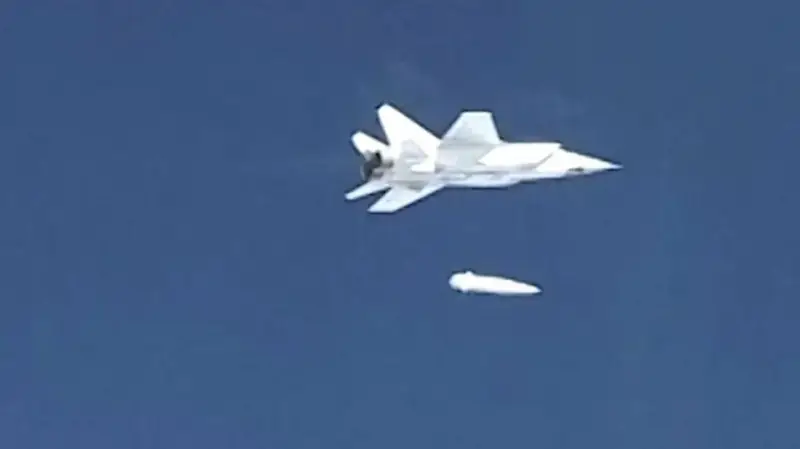
And the task is simpler: from the “Let’s go” point to the “Arrived” point, and you don’t even have to float your electronic brains at the start, where the hemorrhoids are, because you have to overcome gravity.
So if you think like that and imagine yourself as an expert-like organism, then you could give out the KVO figure for the “Dagger”. 10-30 meters, which is more than decent for a distance of 1 km. But for a 000-kg warhead it’s not critical in terms of accuracy.
But there are nuances.
INS is a fairly accurate instrument if you shoot at a point on the earth’s surface. Which will not run away anywhere, if anything. Moreover, with position correction based on satellites.
But there seems to be a problem with the aircraft carrier. Not only does it not stand still, it also moves in three-coordinate space, because the rough seas have not been canceled. And in order to plant a rocket into it, which goes along the INS, albeit with coordination, you have to be a genius to calculate the trajectory to the meeting point of the rocket and the ship.
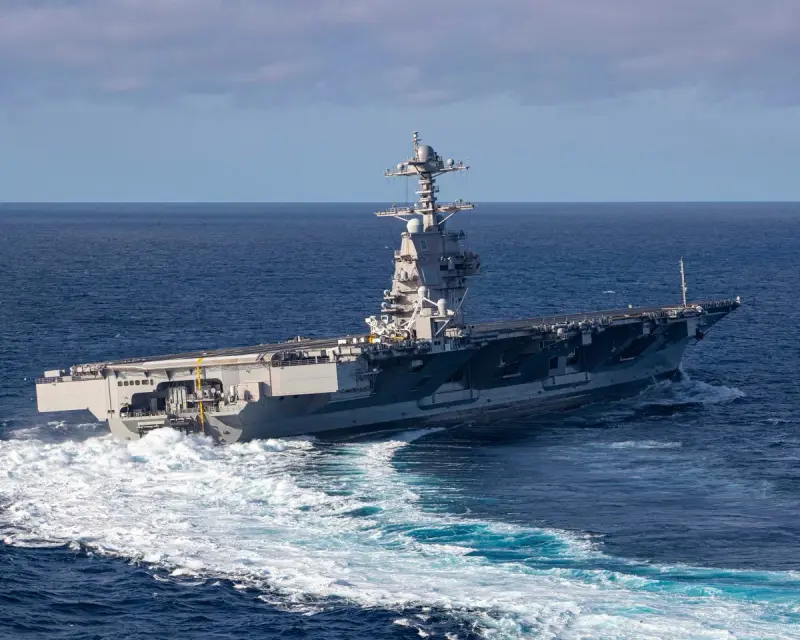
That is why ships are mostly hit by missiles with radar homing heads; whether they are active or passive is not so important. A passive RLGSN guides a missile according to the signal of its illumination radar reflected by the target, while an active one generally has its own radar, the signal of which it flies to.
Not our case at all. There is no way to fit the RLGSN into a Kinzhal or Iskander, because for such an operation and subsequent work a radio-transparent fairing on the nose is generally needed. And we, excuse me, have hypersound at the final segment of the trajectory, that is, Mach 10 and even more are declared.
Next is physics. What happens when a huge piece of metal rubs against the air at a tremendous speed of 5 m/s? That's right, dear ones. Air, which is a mixture of gases, begins to ionize! What is ionized gas? Just plasma. Which, as if by virtue of its properties, completely excludes the use of radar gadgets of any kind.
That’s why they aren’t on the Kinzhal. But there are no problems with electronic warfare. When there is nothing to jam in a rocket, you can crawl around with “death rays” in search of receiver antennas for as long as you like, but alas, there is only disappointment and nothing more. And even suppressing the reception of satellite navigation signals will not make matters any easier, because the INS works, accelerometers and gyroscopes, due to their ancient history, do not know how dangerous electronic warfare is. And they will work from that moment, like everyone else.
Because the rocket seems to be modern, but there is nothing that could be used to grab it.
What is there? And there is an optical seeker. Which one is not specified anywhere for obvious reasons. But it’s already clear that it’s either television or thermal imaging.
TVGSN is a television seeker; it is generally designed to work in exceptionally good weather conditions, with good visibility. Allows you to show a “picture” map, but is very dependent on the weather.
TPVGS - thermal imaging seeker. It works on the same principles as TVGS, but in the infrared range of the spectrum, which allows it to be less dependent on weather conditions.
But here is an aspect: both seekers can be used only when the missile is not flying at hypersonic speed. When there is no shield of hot gas, that is, plasma, in front of the rocket. But this is completely different story, because at such a speed of 4-6M, decent air defense systems and their anti-missile systems begin to work quite normally.
But in this case, at lower speeds, yes, you can use the optical seeker. But this is precisely the seeker, the homing head. That is, the rocket “looks” at the terrain through optical sensors and compares the map in front of its “eyes” with the one stored in its memory.
Here the problem is of a different nature: in order for telenavigation to work as it should, it simply needs landmarks. There are a lot of them on land: forests, rivers, lakes, cities, railways, highways. What about the sea? Unpleasant moment.

TPVGS, of course, is more interesting, because the ship may well be in contrast to the aquatic environment, but there are no less pitfalls here.
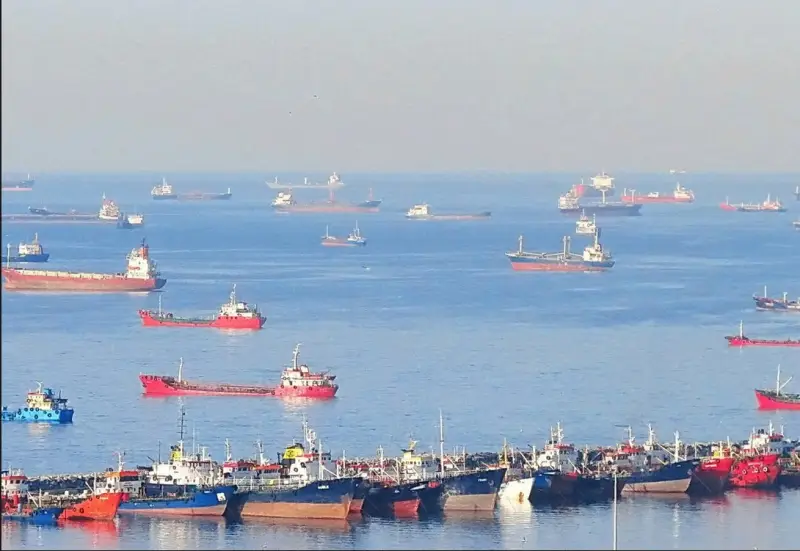
Some people had an outright misunderstanding of the question. Alas, the optical seeker is not like that of an FPVdrone, it does not transmit the picture to the operator, who can give some kind of signal to the rocket’s rudders and thereby correct the course. Everything happens inside the processors of the rocket control unit.
The “Dagger” is aimed at coordinates that are either laid before the launch, or received from satellites and target designator aircraft, that is, it is designed to hit stationary targets whose coordinates are known and do not change. This is exactly what it is intended for, it is made for this task. Options are possible, but for this, somewhere in the AUG area there must be an AWACS aircraft, which will accurately determine the coordinates of the group of ships and transmit it to the carrier aircraft. Or - yes, the services of a satellite constellation with exactly the same tasks will be required.
But here the main problem arises: an aircraft carrier tends to move. Even if the ship is anchored, it still turns in the direction of the wind, that is, it drifts “around” the anchor, plus it slowly moves along with the anchors, especially if the wind is strong. Still, a rather big vessel. Well, if without an anchor and underway, then everything is bad.
Even if theoretically the satellite gives an AUG point, behind all our airfields where Dalnaya is based aviation They are watching, and constantly. And not a single takeoff will go unnoticed. Will NATO see the launch of 2-4 MiG-31Ks? Without a doubt. Patrolling with "Daggers" over the Black Sea? Yes, this is more serious.
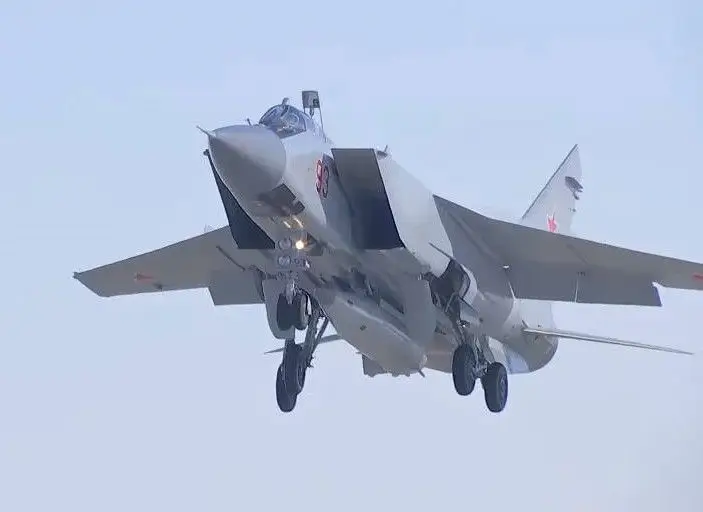
But what happens if the start and launch are detected? In general, of course, if an aircraft carrier is at anchor or at the quay wall, things can turn out very sad. 1 km is just 000 meters. We use a calculator - 1 minutes or so of net flight time. What can you do in 000 minutes? Well, maybe just take care of clean pants.
In the sea, of course, raise the anchor and give minimal speed, moving the ship literally 100-150 meters away - and you will be relieved to see a “gurgle” with a lot of spray. The INS may not be able to cope with the steering, but it will more or less drop the rocket at the coordinate. There will be a ship there - one situation, no - completely different.
The most unpleasant thing here is that the ship can generally move at low speed, maneuvering a little, and the Dagger will never hit it. It's a pity, of course, but that's how it is. The missile was designed for completely different conditions of use. And they, the conditions, are land conditions. Stationary objects of various kinds are targets for the Dagger, but not as non-dynamic targets such as ships.
By the way, the American HIMARS works exactly the same way: ANN+GPS. And, unfortunately, the American product demonstrated its accuracy in full. Meanwhile, it flies much closer than the Iskander or, moreover, the Kinzhal. But - for stationary objects whose coordinates were known. And on land.
Who and why wrote that “Dagger” is able to work on ships is known. Mr. Deputy Minister of Defense Yuri Borisov in 2018 enlightened the residents of the country through the “Red Star” that the “Dagger” -
Then, of course, it all started. A fellow captain said that crocodiles fly... At night, low, but still.
I can’t very well imagine hitting a frigate with the Dagger. There is not enough imagination, but if there was enough, of course, the frigate would come to an end. And the destroyer too, the point here is not only that there is 500 kg of warhead, but also that there is a breakthrough in kinetic energy gained during the descent to the target from the highest point of the trajectory. At hypersonic speed...
An aircraft carrier is a stronger phenomenon. If we hypothetically assume that the 9-S-7760 product hits an aircraft carrier, then there are many options. And in the worst case scenario (for Americans), one product will be enough. Enormous kinetic energy, meeting speed - there is a suspicion that the Dagger can pass more than one deck. Of course, it won’t reach the nuclear power plant, it’s hidden too deeply, but storage facilities are just fine. Especially those where fuels and lubricants are stored. It will be very... impressive.

But in order to actually launch such a ship for good, more than one 500-kg warhead will be needed, that’s a fact.
And here, of course, it is better to use a flock of anti-ship missiles, which, compared to the Kinzhal, have a better chance of getting where they need to go.
It turns out that in theory, if absolutely necessary, 9-S-7760 can be used against such a target as a ship. As an aircraft carrier, God forbid, it doesn’t disgrace itself as a frigate. And the missile even has certain advantages over anti-ship missiles:
- higher flight speed on the final segment of the trajectory, which makes interception almost impossible;
- insensitivity to electronic warfare effects due to the lack of something that can be influenced;
- fast flight speed makes it difficult for the enemy to respond to launch information;
The downside is that the 9-S-7760 was not originally intended to work on targets such as ships. For this purpose, the rocket still does not have a completely (or rather, not at all) suitable guidance system.
That is, when the MiG-31K for some reason begins to patrol in the sky over the Black Sea, the American (British, Italian and Turkish) ships did not strain themselves very much in place of the crews. However, this does not mean that such a phenomenon should be treated without reverence at all. On land, there are no fewer targets worthy of being hit with the Dagger, but many times more. And here the capabilities of the complex have already been demonstrated more than once.
Information